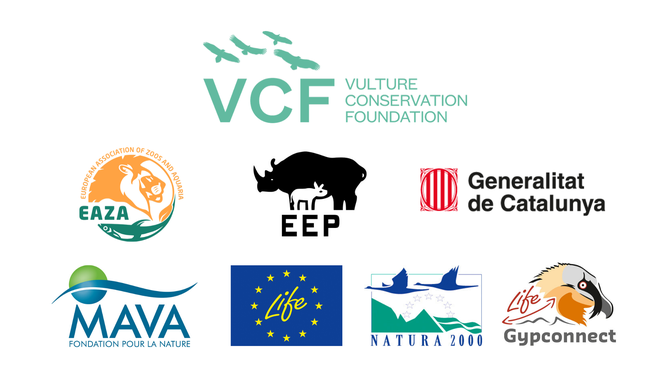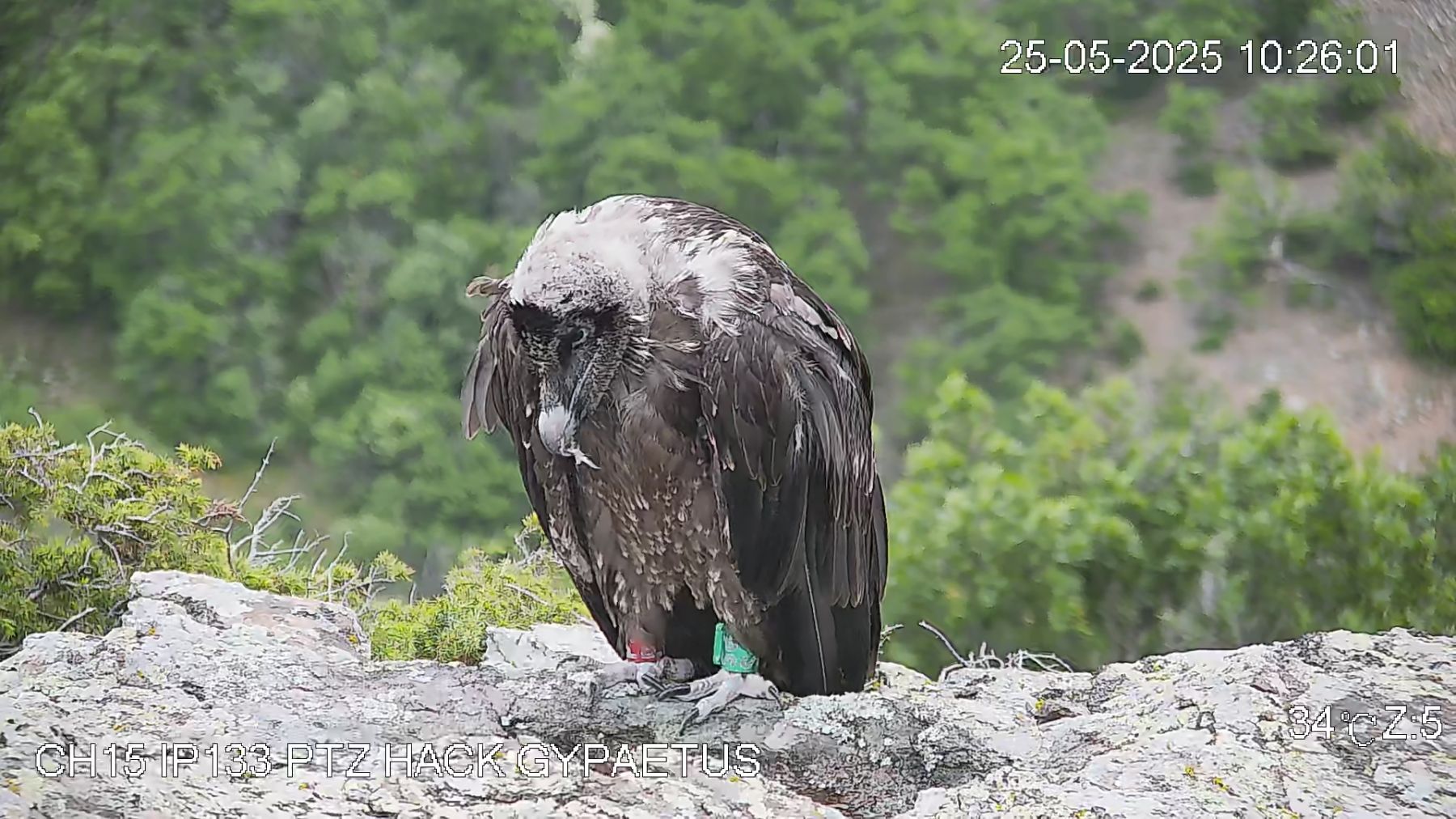
With the Bearded Vulture breeding season in full swing and the coronavirus outbreak, we are very busy here at the VCF coordinating our Bearded Vulture Captive Breeding Network (EEP), managing our two specialised captive breeding centres in Spain, Vallcalent Specialised Breeding Centre and Bearded Vulture Captive Breeding Centre of Guadalentín, and developing emergency protocols and adapting to the everyday challenges caused by this outbreak.
Within the Bearded Vulture EEP, there are already many chicks that hatched during this breeding season, and we are expecting more to follow suit soon. This season has been yet another one with pleasant surprises, but we are not that surprised since this species never fails to amaze us!
Bearded Vulture Breeding Season in captivity
Bearded Vultures are the earliest breeders of the four European vulture species. In captivity, pairs usually start to breed earlier than their conspecifics in the wild. They typically begin to lay eggs in mid-December and continue up until February, with parents sharing brooding responsibilities until the chick hatches after an average of 54 days – some chicks, however, some are artificially incubated. Eggs are usually extracted from the nest a few days before they hatch, and are monitored by human keepers in case the chick needs assistance during hatching. They are then reared by Bearded Vultures to avoid human imprinting, but every case is different. Some are raised by their biological parents, some are adopted by foster parents that failed to breed while others by one foster parent – there is a special case within the breeding network where a human imprinted male fosters a chick.
Hatching of eggs
After about 54 days of incubation, if the eggs are fertile and everything else goes well during the breeding season, eggs are ready to hatch! At Vallcallent Specialised Breeding Centre, which hosts the most challenging pairs, the eggs are artificially incubated – something thought to be inconceivable a few years ago. In the video below, you can watch the final moments of the hatching process of Bearded Vulture chick BG1077 – the offspring of the pair BG371 “Tejo” and BG103 “Dama”. The pair laid the egg on 23 January at 10:23, and it was the third egg they laid this season. On the same day at 12:15, the team at the Centre removed the clutch to incubate it artificially. It weighed 221.5g. In addition to the normal automatically egg turning, a method called thermal shock was applied, which was developed by the VCF. This method involves giving eggs a thermal shock four times per day, every time exposing them for five minutes to outside temperatures, which promotes the gas exchange (CO2 and O2) and consequently the development of the embryo while also manually turning the egg 180 degrees. The air cell of the egg pecked on 12 March between 11:30 to 14:00. Two days later on 14 March, between 13:15 to 15:00, the chick pecked the eggshell. The following day on 15 March, the hatching began at 9:45! A few hours later at noon, the chick pecked three-quarters of the eggshell, and it took a long break until it finally decided to hatch at 14:46. The chick did all of this alone, without requiring any human help. It weighed 147.7g, and it is a healthy and strong chick!
Number of chicks that hatched in the EEP
This year’s captive breeding season is turning up to be a good one! The 41 breeding pairs within the Bearded Vulture EEP have laid a total of 70 eggs. Today there are a total of 23 alive hatchlings, from which 15 are being reared by Bearded Vultures. With the coronavirus outbreak, we are facing many difficulties for the breeding season, but we are reacting and adapting to the situation daily. We have already prepared contingency plans and emergency protocols to respond to these challenging circumstances.
Pleasant surprises from the 2019/20 breeding season
Among these challenging times that are affecting all of us, we want to highlight a few pleasant surprises that occurred during this year’s breeding period.
Since 2006, the pair from Berlin zoo is laying clutches but with no success. This year, after 14 years of unsuccessful attempts, they laid a double-clutch, and both eggs were fertile! The first chick hatched in the nest, and its parents are currently rearing it. The second chick hatched in the hatcher. Unfortunately, it died in the third day – it was very weak from the beginning, perhaps it suffered from a yolk sack infection, but nothing is confirmed.
Something even more surprising and unusual is that the pair BG594 and BG006 at Richard Faust Breeding Centre in Vienna laid a clutch on Wednesday 18 March. It was a big surprise because the female is already 42 years old. We have high hopes that the egg is fertile and that it will hatch since its mother is very mature with a lot of experience.
Importance of captive-breeding Bearded Vultures

The Vulture Conservation Foundation (VCF) coordinates the Bearded Vulture Captive Breeding Network (EEP) of zoos, specialised breeding centres, recovery centres and private collections. This involves closely working with colleagues across Europe to ensure the best breeding results from the 178 birds within the network.
Captive-breeding of Bearded Vultures is essential for their reintroduction to the wild, and it was a critical component to bring back the species to the Alps after their extinction. For the past few decades, the VCF has been releasing captive-bred Bearded Vultures into the wild to reintroduce or reinforce the population of the species across Europe. Between 1986 and 2019, the VCF together with its partners, released a total of 323 juvenile Bearded Vultures into the wild, including 227 in the Alps & Pre-Alps, and 63 in Andalucía. In 2019, the VCF and its partners released a total of 22 Bearded Vulture – nine of them in Andalusia – helping boost local populations, and making it the best Bearded Vulture Release Season to date!
You can follow the news of the breeding season on Facebook, Twitter, Instagram
and LinkedIn with #BeardedVultureBreedingSeason.




